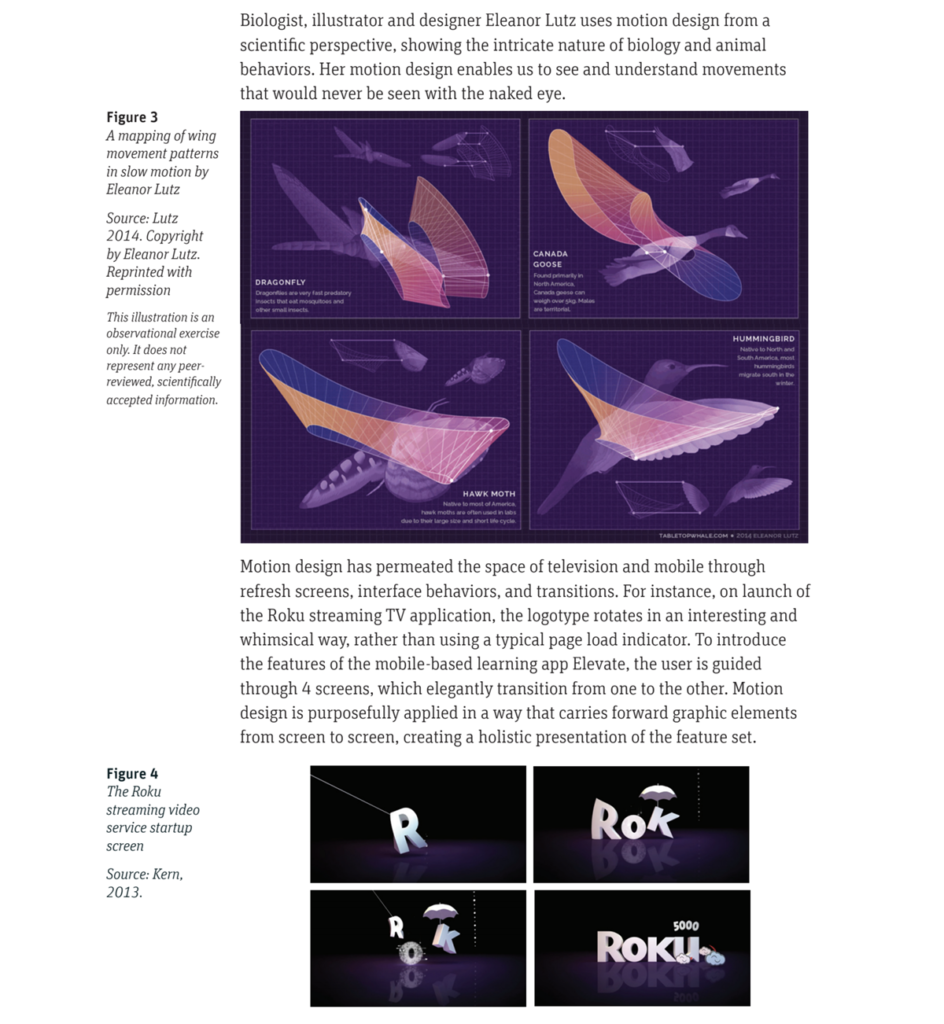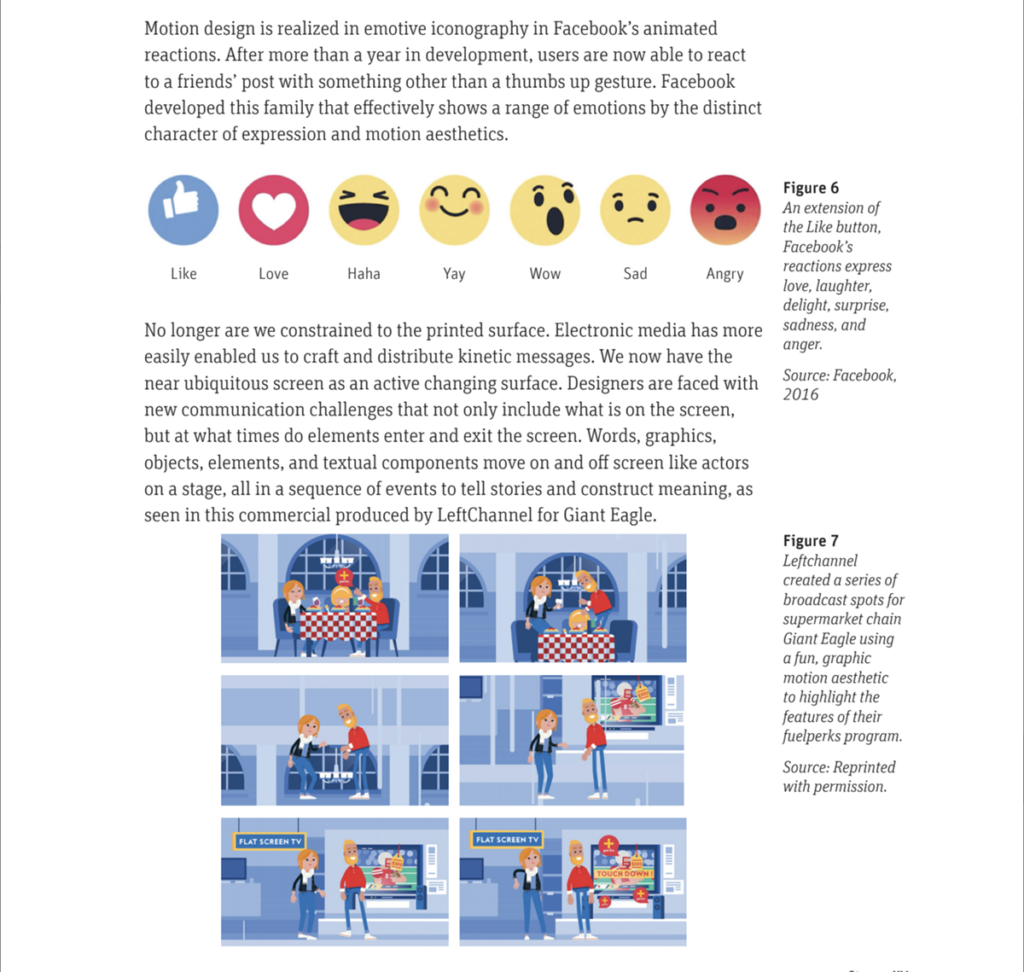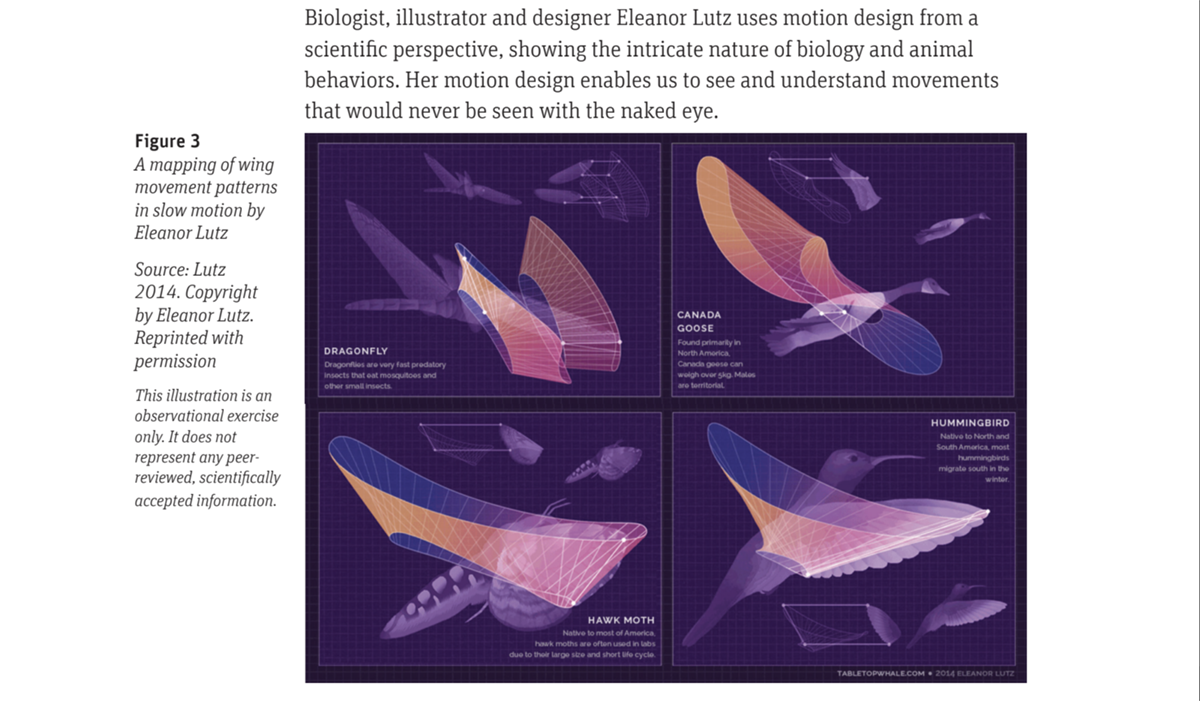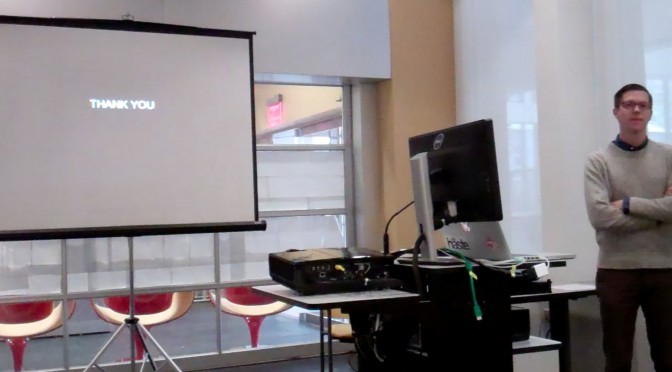R. Brian Stone, Associate Professor, The Ohio State University
Leah Wahlin, Senior Lecturer, The Ohio State University, Editors
The Theory and Practice of Motion Design: Critical Perspectives and Professional Practice is a collection of essays offering an expansive, multi-platform exploration of the rapidly-expanding area of motion design and motion graphics. It takes into account both theoretical questions and creative professional practice. The contents of the book span interaction design, product interfaces, kinetic data visualizations, typography, TV and film title design, brand building, narrative storytelling, history, exhibits, and environments. Comprised of an interdisciplinary academic essays and professional interviews – together form a dialogue between motion design theory and professional practice. Written for both those critically engaged with motion design as well as those working or aspiring to work professionally in the field, the book features a range of international contributors and interviews with some of the best-known designers in the field, including Kyle Cooper, Karin Fong, and Jakob Trollbäck. The Theory and Practice of Motion Design seeks to illuminate the diverse, interdisciplinary field of motion design by offering a structured examination of how motion design has evolved, what forces define our current understanding and implementation of motion design, and how we can plan for and imagine the future of motion design as it unfolds.

An accompanying online resource site, www.motionresource.com, contains the actual motion based visual examples described in the text. The Forward and First Chapter are available for review on Amazon.com.
AIGA Fellow Hugh Dubberly writes,
“Stone and Wahlin have produced the best book on designing for motion since Peter von Arx’s classic Film Design. Their new book The Theory and Practice of Motion Design should be required reading for anyone concerned with how words and information move on screen and how movement contributes to meaning.”
Notable Yale University Professor Christopher Pullman writes
“Instead of a how-to book, this is a ‘how-to-think-about’ book that delivers on its title, combining the history and intellectual underpinnings of motion design with the insights of contemporary design professionals… a thoughtful response to the profession’s shift from the mute flat-land of print to today’s rich, multi-dimensional options for communication.”

Outcomes: The Theory and Practice of Motion Design: Critical Perspectives and Professional Practice is collection of essays offering an expansive, multi-platform exploration of the rapidly-expanding area of motion design and motion graphics. It takes into account both theoretical questions and creative professional practice. The contents of the book span interaction design, product interfaces, kinetic data visualizations, typography, TV and film title design, brand building, narrative storytelling, history, exhibits, and environments. Comprised of an interdisciplinary academic essays and professional interviews – together form a dialogue between motion design theory and professional practice. Written for both those critically engaged with motion design as well as those working or aspiring to work professionally in the field, the book features a range of international contributors and interviews with some of the best-known designers in the field, including Kyle Cooper, Karin Fong, and Jakob Trollbäck. The Theory and Practice of Motion Design seeks to illuminate the diverse, interdisciplinary field of motion design by offering a structured examination of how motion design has evolved, what forces define our current understanding and implementation of motion design, and how we can plan for and imagine the future of motion design as it unfolds.
R. Brian Stone is an Associate Professor of Design at The Ohio State University, USA. His award-winning work and teachings are centered in the areas of motion design, interaction design, information visualization, and user experience. Professor Stone is the co-organizer of the Motion Design Summit conferences [MODE] and is editor of a collection of essays entitled, The Theory and Practice of Motion Design: Critical Perspectives and Professional Practice published by Routledge (2018). Professor Stone has held visiting appointments at the National University of Singapore (NUS), Escola Superior de Desenho Industrial (ESDI) in Brazil, and Universidad Americana Managua, Nicaragua (UAM). Apple Computer recognized Professor Stone’s teaching with the Apple Distinguished Educator award. He is also a recipient of the Ratner Distinguished Teaching Award, The Ohio State University Alumni Award for Distinguished Teaching, and the Order of Omega Faculty Recognition Award.
http://www.modesummit.com/2019/ + https://tinyurl.com/yb6tdwj5
Leah Wahlin’s background in English Literature and composition pedagogy is layered with extensive professional experience in content development, copywriting, and project management. She brings her interest in the intersections of technology, visual design, and strategic communication to the classroom, creating assignments and activities to help students develop the professional communication skills that are most relevant in today’s workplace. She has led development of two e-textbooks currently in use in the Department of Engineering Education, and she co-edited a collection about Motion Design with R. Brian Stone.
Recipient of recognition in the Design Incubation Communication Design Awards 2019.

